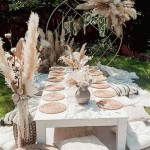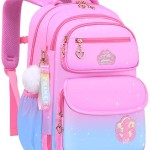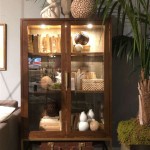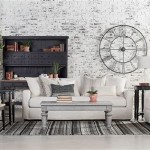Infant Room Decor
Decorating an infant's room is a significant undertaking for new parents. It represents the creation of a nurturing and stimulating environment for the baby's first years of life. Careful consideration of color palettes, furniture choices, and decorative elements contributes to a space that fosters both comfort and development.
The choice of color palette significantly impacts the room's atmosphere. Soft, pastel hues like lavender, mint green, and pale yellow create a calming and serene environment conducive to sleep. These colors also offer a neutral backdrop that can be easily adapted as the child grows. Brighter, more stimulating colors like coral, teal, or sunny yellow can be incorporated through accents like wall art, rugs, or mobile features. These pops of color add visual interest and can contribute to early visual stimulation for the infant.
Furniture selection plays a crucial role in both functionality and safety. The crib is arguably the most important piece, and selecting a sturdy crib that meets current safety standards is paramount. Parents should opt for cribs with adjustable mattress heights and ensure the slats are spaced appropriately to prevent entrapment. A comfortable rocking chair or glider provides a dedicated space for feeding and soothing the baby. A changing table with ample storage offers a convenient and organized area for diaper changes and provides easy access to essential supplies. Storage solutions, such as dressers, shelves, and toy bins, are essential for maintaining an organized and clutter-free nursery.
Lighting is a critical element in infant room decor. Natural light is ideal during daytime hours, so maximizing window exposure is beneficial. Window treatments should offer light control for nap times and create a darkened environment for nighttime sleep. Soft, ambient lighting is essential for nighttime feedings and diaper changes. A dimmer switch allows for adjustable light levels as needed. A nightlight can provide a sense of security and comfort for the infant, aiding in sleep and reducing nighttime anxieties.
Textiles contribute significantly to the room's overall aesthetic and the infant's comfort. Soft, breathable fabrics like cotton and linen are ideal for crib sheets, blankets, and swaddles. Choosing hypoallergenic materials minimizes the risk of allergies and skin irritations. A soft rug provides a comfortable surface for tummy time and playtime as the infant grows and begins exploring. Curtains or drapes add a decorative touch and contribute to light and temperature control.
Decorative elements personalize the nursery and provide visual stimulation for the baby. Wall art featuring playful animals, nature scenes, or abstract patterns adds visual interest. Mobiles with gently moving objects or musical features can entertain and soothe the infant. Decorative wall decals offer an easy and affordable way to personalize the space. Consider incorporating elements that reflect the parents' interests and hobbies, creating a cohesive and welcoming space for the entire family.
Safety considerations are paramount in infant room decor. All furniture should be securely anchored to the wall to prevent tipping hazards. Cords from blinds and curtains should be kept out of reach of the infant. Electrical outlets should be covered with safety plugs. Avoid placing heavy objects on shelves or surfaces where they could fall and pose a risk. Regularly inspect the room for potential hazards and address them promptly.
Creating a stimulating environment is crucial for the infant's development. Incorporating a variety of textures, colors, and patterns can engage the baby's senses. Hanging a mobile with contrasting colors and patterns can stimulate visual development. Playing soft music or nature sounds can promote auditory development. Providing safe and age-appropriate toys encourages tactile exploration and motor skill development.
Organization is key to maintaining a functional and peaceful nursery. Utilizing storage solutions like bins, baskets, and shelves keeps essentials organized and accessible. Labeling storage containers facilitates easy retrieval of items. Regularly decluttering the room helps maintain a tidy and calming space. A well-organized nursery promotes efficiency and reduces stress for parents.
Adaptability is an important factor to consider when decorating an infant's room. Choosing furniture and decor that can transition as the child grows can save time and money in the long run. A convertible crib that can be transformed into a toddler bed extends the furniture's lifespan. Selecting neutral colors and patterns allows for easy updates with accessories and accents as the child's preferences evolve. Investing in quality, durable pieces ensures longevity and practicality.
Finally, personal touches add warmth and character to the infant's room. Incorporating family photos, handmade items, or cherished keepsakes creates a unique and meaningful space. These personalized elements reflect the family's values and traditions, creating a nurturing and loving environment for the new addition.

This Baby Room Décor Guide Will Help You Prep For Pahood

Nursery Design Ideas For Your Baby Designcafe


Baby Room Ideas 15 Tips Decor Inspo For A Stylish Nursery
:max_bytes(150000):strip_icc()/floral-nursery-wallpaper-design-6a2bf0aa674c4559aba0d21df35964b6-2231c2cb90c8403788622823035bcdf7.jpg?strip=all)
57 Inspiring Nursery Ideas For A Baby Girl

Pin On Arquitecture Design
:max_bytes(150000):strip_icc()/acf035_76d222edea6944beaae1d282c9016331mv2-ed8fe09e43ee4bc89527af58d4070433.jpeg?strip=all)
40 Baby Room Ideas For Decorating A Nursery That S Unique

Nature Themed Nursery Decor Ideas For Your Baby S Room

Baby Room Ideas 18 Tips For Designing A Nursery Extra Space Storage

10 Pretty Pink Baby Girl Room Ideas The Greenspring Home







